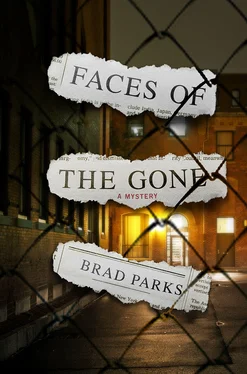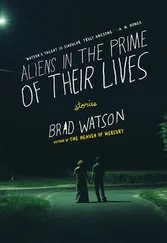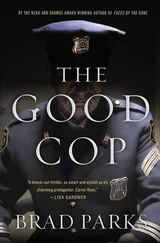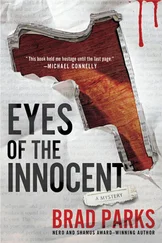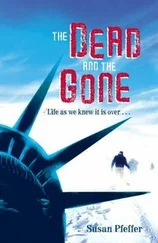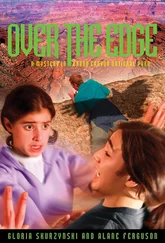Brad Parks - Faces of the Gone
Здесь есть возможность читать онлайн «Brad Parks - Faces of the Gone» весь текст электронной книги совершенно бесплатно (целиком полную версию без сокращений). В некоторых случаях можно слушать аудио, скачать через торрент в формате fb2 и присутствует краткое содержание. Год выпуска: 2010, ISBN: 2010, Издательство: Minotaur Books, Жанр: Триллер, на английском языке. Описание произведения, (предисловие) а так же отзывы посетителей доступны на портале библиотеки ЛибКат.
- Название:Faces of the Gone
- Автор:
- Издательство:Minotaur Books
- Жанр:
- Год:2010
- ISBN:9780312574772
- Рейтинг книги:3 / 5. Голосов: 1
-
Избранное:Добавить в избранное
- Отзывы:
-
Ваша оценка:
- 60
- 1
- 2
- 3
- 4
- 5
Faces of the Gone: краткое содержание, описание и аннотация
Предлагаем к чтению аннотацию, описание, краткое содержание или предисловие (зависит от того, что написал сам автор книги «Faces of the Gone»). Если вы не нашли необходимую информацию о книге — напишите в комментариях, мы постараемся отыскать её.
Faces of the Gone — читать онлайн бесплатно полную книгу (весь текст) целиком
Ниже представлен текст книги, разбитый по страницам. Система сохранения места последней прочитанной страницы, позволяет с удобством читать онлайн бесплатно книгу «Faces of the Gone», без необходимости каждый раз заново искать на чём Вы остановились. Поставьте закладку, и сможете в любой момент перейти на страницу, на которой закончили чтение.
Интервал:
Закладка:
“I’m scared,” I said.
“Me, too,” he replied.
We stared at the building for a while, a couple of guys feeling the weight of the bull’s-eyes on their backs. I put my arm around Tommy. It felt nice to have a little human contact.
Actually, I was starting to feel a lot better in general, like I was coming out of the shock that had gripped me since my phone call from the Nutley police. If anything, the shock was being replaced by euphoria. I was alive. And it felt damn good.
I turned and gave Tommy a hug, patting him on the back.
“Thanks,” I said.
“No problem.”
“Well,” I said, breaking the embrace. “If we wait here much longer, Tina is going to come out here with handcuffs for both of us. I’m heading to the Stop-In Go-Go. You mind checking out the scene at Booker T?”
“Okay,” Tommy said.
“Do me a favor and ask around for Red Coles and Queen Mary,” I said. “And, for God’s sake, watch out for tall men in white vans.”
My trip to the Stop-In Go-Go slowed to a trudge shortly after I turned onto Springfield Avenue, which was doing its best impersonation of a mall parking lot at Christmastime. I remained calm at first, using the time to call Tina. She didn’t pick up her phone-which was perfect-so I left a message telling her that although my cell phone had been turned off, I had not been.
Once I hung up, I reminded myself I shouldn’t let something as trifling and pedestrian as a traffic jam bother me. I’d just had a near-death experience. My thoughts should be more transcendental. I should be glad for the gift that was sitting in traffic.
Instead, all I could think was, why, in the name of all that is most holy, was any road gridlocked at ten-thirty in the morning? It’s a lot harder to be grateful for one’s continued existence when those precious extra moments are being spent stuck behind a Nissan Pulsar with a noisy muffler and an I STOP FOR SALSA bumper sticker.
I finally just parked and hoofed it, and thirteen blocks later figured out the problem: the Stop-In Go-Go had become the command center for the entire metropolitan New York mass media market.
Now it was clear why such scant attention had been paid to the other two catastrophes. Everyone who was anyone in the local infotainment world had set up shop outside the charred remains of this dubiously venerable Irvington institution. The TV trucks outnumbered the fire trucks, ten to two, which was troubling: just think of the flammable potential of all the petroleum-based cosmetics concentrated in such a small area. I could only hope there weren’t any burning embers still floating on the breeze.
As I drew closer, I noticed none of the cameras were pointed at the building. Every last one of them had focused on the five women holding an impromptu press conference on the sidewalk outside-five exotic dancers in varying states of dress and undress.
Channels 6 and 12 were tag-teaming the husky, fake-blond Russian I recognized from my earlier visit to the Stop-In Go-Go. She was dressed in a leopard-print unitard that was being pushed to the theoretical limits of spandex’s tensile strength. Her interview seemed to have ended, but her attempts to spell her name-Svetlana Kachintsova-for the two Hairspray Heads in front of her was something straight out of an English as a Second Language class. And it wasn’t the Russian who was struggling.
Channel 7 was interviewing a woman who had saved not only herself from the fire, but also managed to wrest from the peril her knee-high spike-heeled boots. She would have been five eleven barefooted, but the boots boosted her to six three. She was being interviewed by a Smurf-sized guy who was struggling to maintain eye contact, what with his face being at the same level as her massive, silicone-aided bosom.
Channels 11 and 32, the Spanish-speaking station, were sharing two apparently close friends who had escaped the conflagration in matching kimonos. They insisted on doing their interviews with their arms wrapped around each other-as if the male viewers needed their imaginations prodded any further-and you got the sense they were waiting for Girls Gone Wild to show up so they could start chewing on each other’s tongues.
But the biggest star was Tynesha, who was captivating Channels 2, 4, 9, 22, and 47 with her rendition of the morning’s harrowing events. Wearing her amber contact lenses, furry slippers, and a brief robe, she was telling her story in animated fashion, waving her arms about in a manner the robe wasn’t built to contain. She kept tugging it closed, but every once in a while, when she got too excited, it resulted in a shot that would not have been appreciated by the FCC.
In short, everyone was making great hay out of the scene at the Stop-In Go-Go, which combined the necessary local-TV elements of human tragedy, an easy-to-tell story, and great visuals-with the added bonus of involving strippers.
From a brief bit of eavesdropping on the interviews, I was amused to find the dancers’ stories contradicted each other in nearly every detail-who first became aware of the fire, who had alerted whom to the danger, who had been the most selfless heroine putting herself in harm’s way to save others, and so on.
But they seemed to agree on one basic fact: that sometime after eight that morning, when the five inhabitants of the upstairs apartments were still snoozing in their beds and dreaming of aging sugar daddies, all hell broke loose.
I sidestepped the cameras and looked for someone who resembled a spokesman for the Irvington Fire Department to get the official word, but the only firemen remaining were just as mesmerized by the dancers as everyone else.
With their attention thus occupied, I was able to slink close to the seared building and examine the damage for myself, letting my nostrils tell me the story of what happened. Gasoline. It wasn’t as fresh as if someone had just soaked the rags. It was more like a little-used Exxon station, with the faint remains of an eighty-seven-octane fill-up still lingering in the air.
Or maybe ninety-three. Whatever it was, it had done the job. The tar-paper roof was more or less gone, reduced to a few scant islands of singed material remaining atop the blackened joists. The yellow aluminum siding had gone brown in spots, warped and buckled from the heat. The signature Stop-In Go-Go sign, with its curvaceously outlined dancer, was hanging askew, half melted so the dancer appeared to be some freakish doppelganger of her former lovely self.
It was sad. That sign, that bar, had been a fixture for at least half a century in Irvington. It had seen the city through every economic and social shift, offered dancers good money and patrons a chance to blow off steam (and perhaps a little more) in a relatively safe, structured environment. I suppose you could say it had been a place of comfort for workingmen and a place of work for comfort women.
And now it was no more. I doubted it would be rebuilt. The owner, who had probably been looking for a way out, would take the insurance money and run, selling the land to someone who would open an auto parts franchise or a chain drugstore.
I know it’s a little strange to get sentimental about go-go bars. I certainly wouldn’t recommend running for city council on a progo-go platform.
But to me, go-go bars get a bad rap from outsiders who don’t understand the culture, people who want to see them as dens of vice and smut and nothing else. They are dens of vice and smut, but they’re also communities of people who, in their own bizarre way, really care about each other. They’re wholesome places, albeit in an unwholesome way, and each time one of them gets bumped out for an auto parts store, some important bit of a town’s character is lost.
Читать дальшеИнтервал:
Закладка:
Похожие книги на «Faces of the Gone»
Представляем Вашему вниманию похожие книги на «Faces of the Gone» списком для выбора. Мы отобрали схожую по названию и смыслу литературу в надежде предоставить читателям больше вариантов отыскать новые, интересные, ещё непрочитанные произведения.
Обсуждение, отзывы о книге «Faces of the Gone» и просто собственные мнения читателей. Оставьте ваши комментарии, напишите, что Вы думаете о произведении, его смысле или главных героях. Укажите что конкретно понравилось, а что нет, и почему Вы так считаете.
